
|   |

|   |
Sang Saath: Unique togetherness in art - Madhur Gupta e-mail: madhurgupta04@gmail.com July 5, 2019 The widely acknowledged masters of modern Indian art namely Raza, Husain, Ram Kumar, Krishen Khanna and Akbar Padamsee came together to create a new phase in Indian art. Rooted in tradition, their vision and practice acknowledged and celebrated plurality of vision, idioms, styles with great innovation and most of them remained friends throughout their life and career. This togetherness was marked by dialogue, correspondence, criticism and enduring warmth and care for each other. 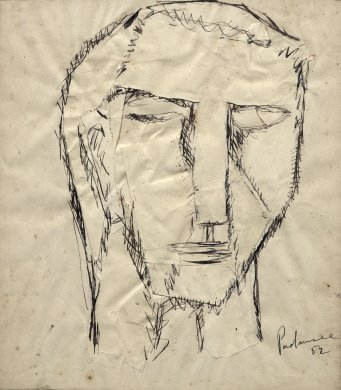 Akbar Padamsee 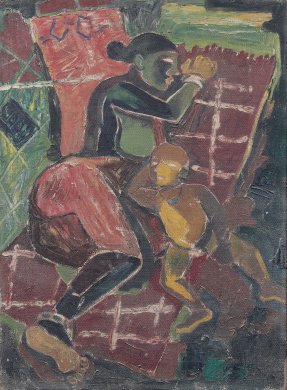 Husain (KK Collection) It was exciting to witness some of the most thought provoking works by these maestros including an early figurative of Raza that has never been publicly shown before in 'Sang Saath,' a one of its kind exhibition currently going on at Shridharani Art Gallery, Triveni Kala Sangam, New Delhi. The exhibition aptly titled, celebrating the camaraderie of the Bombay Progressive Artists' Group, coincides with the 3rd death anniversary of one of its key members S.H. Raza. What one found of great value from a historical point of view were the letters on display that these artists had written to each other bringing to light how deeply connected they were to each other, very unlike today's generation who believes in putting forth their own interests foremost. Speaking to the luminary artist Krishen Khanna who was present at the exhibition one got to know at much length about the Progressive Artists' Group which was formed by six founder members, F.N. Souza, S.H. Raza, M.F. Husain, K.H. Ara, H.A. Gade, and S.K. Bakre (the only sculptor in the group). Others associated with the group included Manishi Dey, Ram Kumar, Akbar Padamsee, Tyeb Mehta, and Khanna himself. 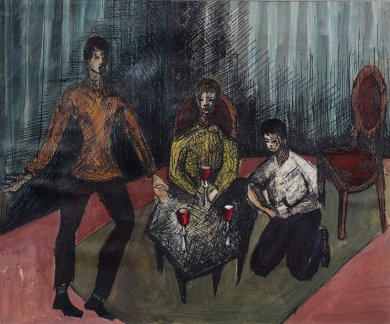 Raza Figurative 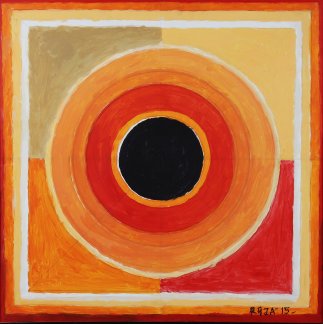 Raza, Saprem 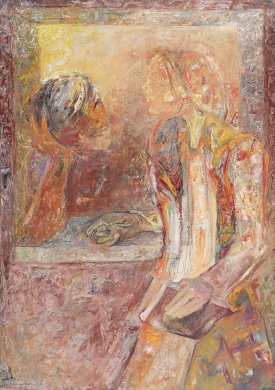 Krishen Khanna 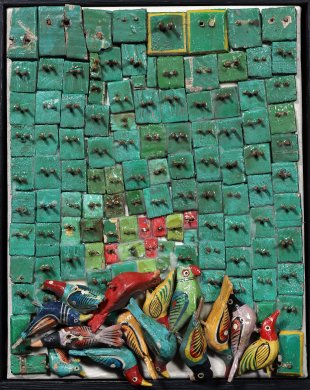 Janine Mongillat, Bird The 94 year old artist grew reminiscent and said, "The group wanted to break from the revivalist nationalism established by the Bengal school of art and wanted to encourage an Indian avant-garde, working at an international level." Formed just months after 14 August in 1947, the partition of India and Pakistan that caused unheard magnanimity of religious rioting and death of tens of thousands of people displaced by the new borders, the artists of the Progressive Artists' Group often cited, "The partition is an impetus for our desire for new standards in India, starting with a new style of art. Our intention is to paint with absolute freedom for content and technique, almost anarchic, save that we are governed by one or two sound elemental and eternal laws, of aesthetic order, plastic coordination and colour composition." By 1950, Vasudeo S. Gaitonde, Prafulla Dahanukar, Krishen Khanna and Mohan Samant had joined the Group. Following the departure of the two main founders Souza and Raza from India few years later, S.K. Bakre also left the group, which ultimately disbanded in 1956. Coming together of these worthies posthumously, makes 'Sang Saath' a must go to exhibition not only for the visual art connoisseurs but those of performing arts as well, just to witness how the play of colours can evoke such feelings of movement. The exhibition is on at Shridharani Art Gallery, Triveni Kala Sangam, New Delhi till 11th July 2019. Odissi dancer Madhur Gupta is a disciple of Guru Sharon Lowen. He contributes to national dailies like The Hindu, The Times of India, The Asian Age, The Indian Express covering at large the Indian classical dance and music scene of the subcontinent. |